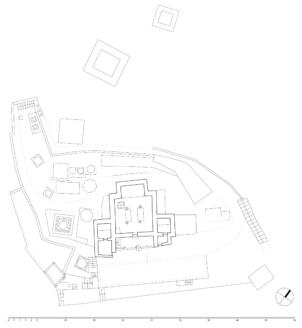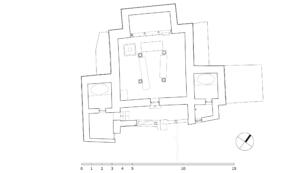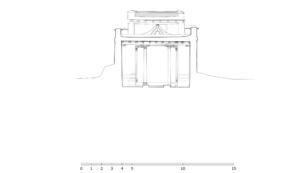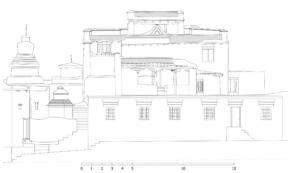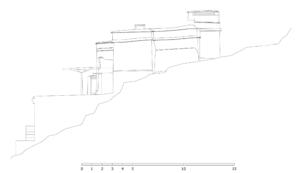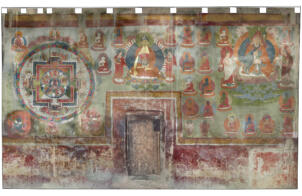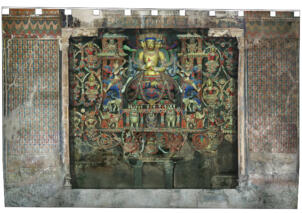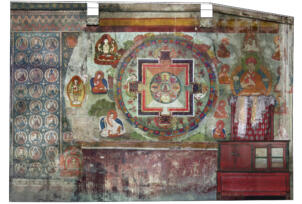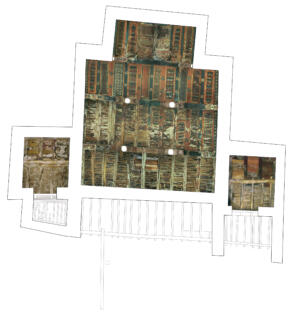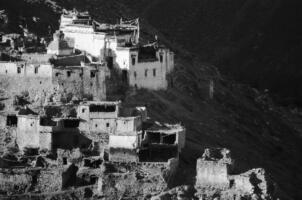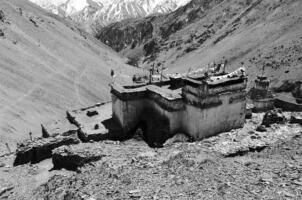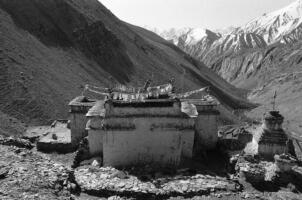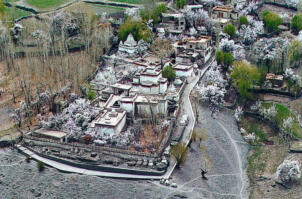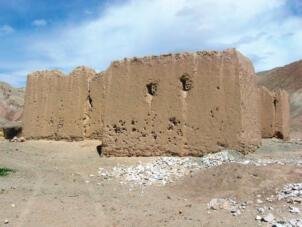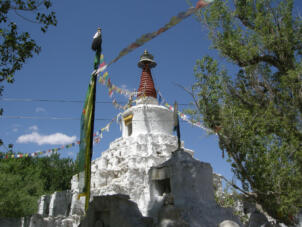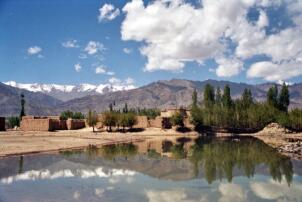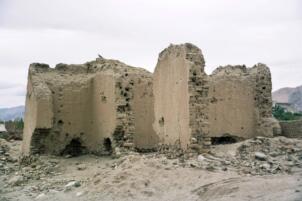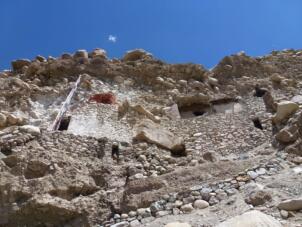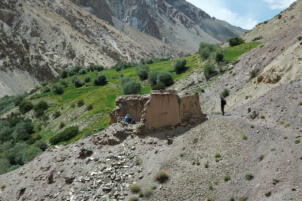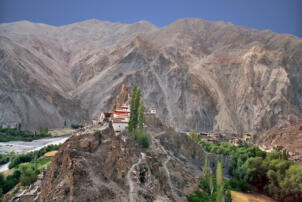Ladakh
Sumda Chung
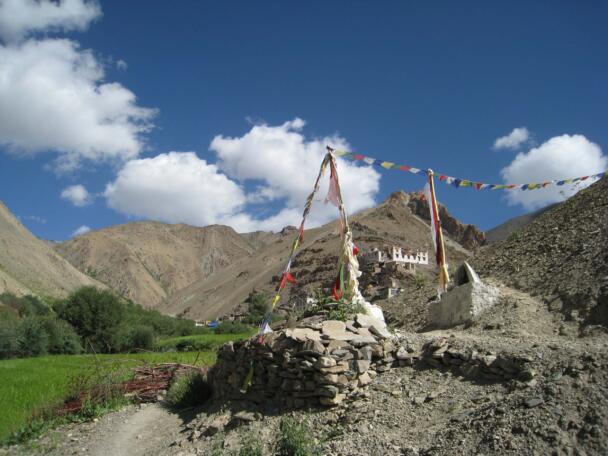

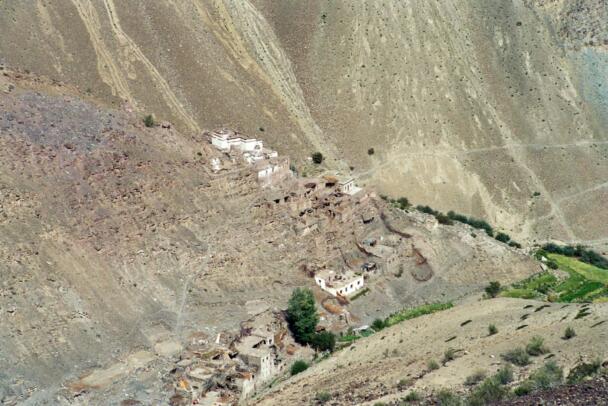
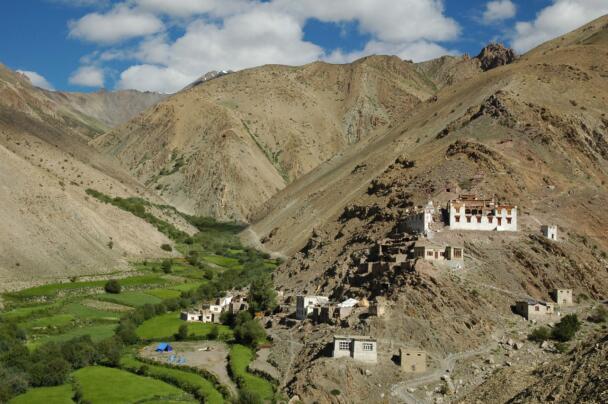
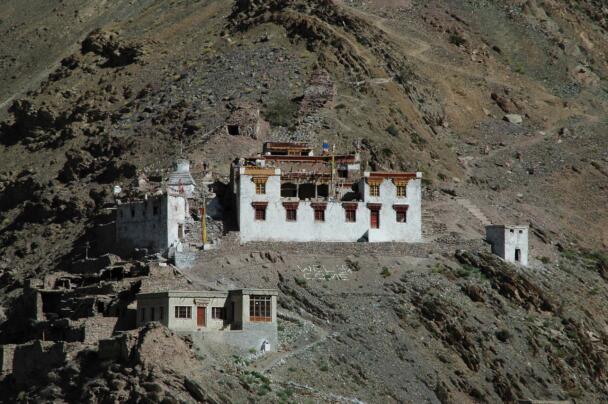
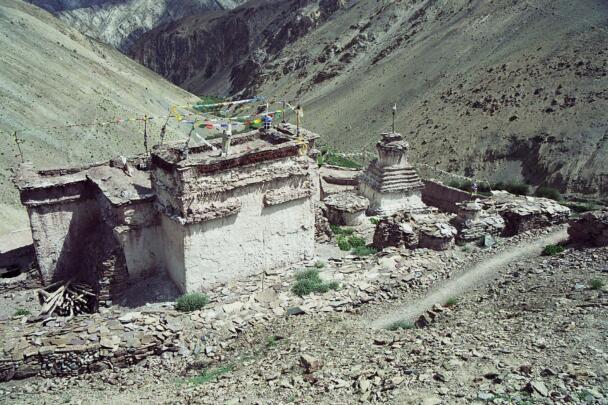
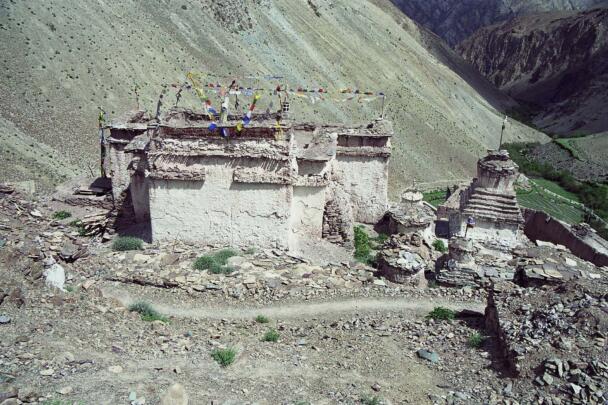
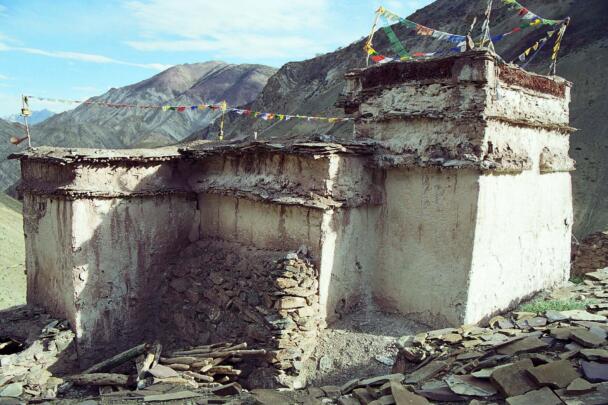

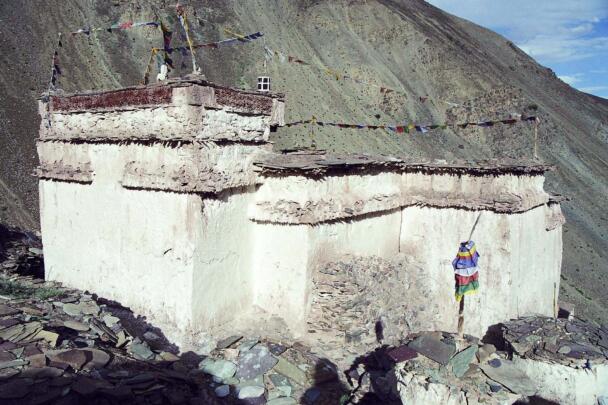

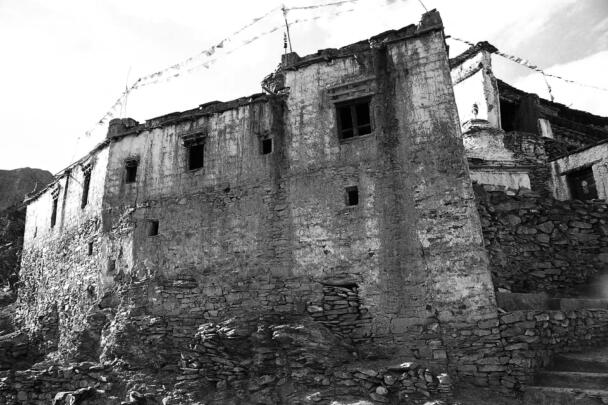
The temple of Sumda Chung
Coordinates of the site: 34° 8’1.54″ northern latitude and 77° 9’2.81″ eastern longitude, at an altitude of 3900 meters.
The village of Sumda Chung is located about 40 kilometres (airline) west of Leh. Sumda Chung can be reached in half a day’s walk from the road running alongside the Zanskar River. The footpath follows the waterways continuously uphill to the village that consists of only a few houses. The temple is situated on the crest of the ascending slope on the eastern side of the settlement. The foundation of the temple can be dated back to the 11th century. The temple consists of a main room with an apse, a roofed porch and two lateral rooms which can be accessed from the porch. They have been added to the main room in a later period. The entrance of the temple faces southeast. The shape of the temple is characterized by an unusual roof-construction above the apse, where the triangularly wooden construction is covered by another flat roof-lantern. The main room with the apse, which today is the remaining part of the original structure, is built on solid rock, whereas the porch and parts of the lateral rooms have foundations of stone masonry. These stone terraces have obviously been sliding away several times in the past, most probably as a consequence of rain waters coming down the mountain and causing the breakaway of the porch and parts of the two rooms for at least two times. Remains of older constructions can be traced by analysing the wooden beam structure of the roof of these parts of the building.
Cf. Luczanits, Christian. 2004. Buddhist Sculpture in Clay: Early Western Himalayan Art, late 10th to early 13th centuries. Chicago: Serindia Publications, pp. 175-190.
2D Plans
3D Model

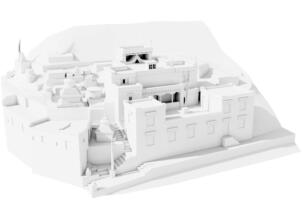

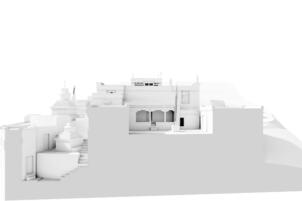

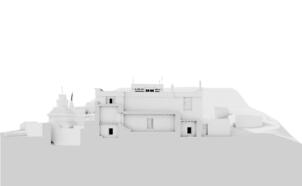


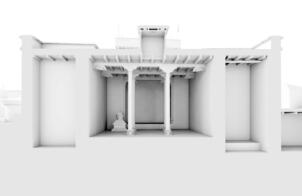

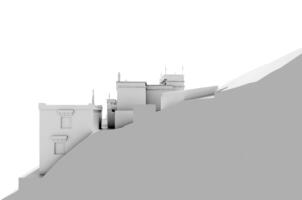

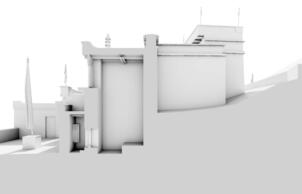
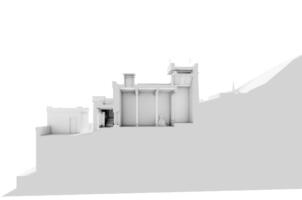

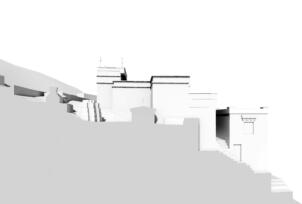
Photomontages of the interior
More from
